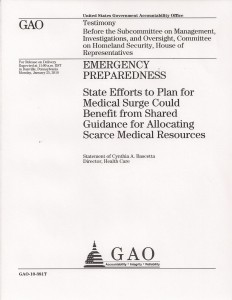Some journalists are observing that the US response to Haiti is starkly representative of the modest change in US emergency Preparedness since Katrina. Here are a few lessons from Haiti:
1. Get eyes on the ground immediately. Do not rely on the media for situational awareness (or the CIA or the Embassy, they are holed up and have no clue). Do the wide-area surveillance on day one.
2. Carpet-bomb the place with water, emergency rations, charcoal, plastic, light rope, and enough light lumber or rods to create shelter in a land without timber. NOTE: include enough water to cook the rations, don't assume water is available.
3. Have Peace Jumpers ready to go–mix of medical, military police, combat engineers, landing zone flight directors.
4. Have a mix of body registration photographers, body handlers, and deep ditch mass grave diggers with air-droppable equipment.
5. Do NOT try to micro manage from above instead use the military as a “core force” to assure mobility, communications, and general support to a massive influx of volunteer teams able to bring stabilization & reconstruction to one neighborhood at a time.
6. Start the flow of helicopters, landing craft, field hospitals, and water units on day one.
7. From Day One, create a global public understanding, in detail, of the situation on the ground, along with a Global to Local Range of Needs Table that can be updated using UNICEF's Rapid SMS as well as Twitter Support Networks.




